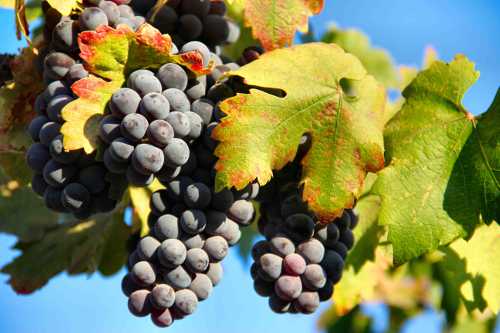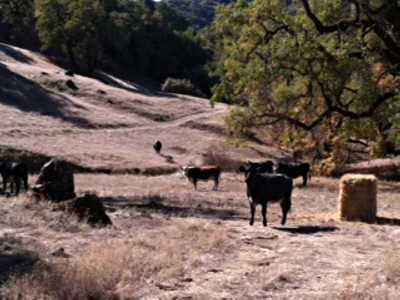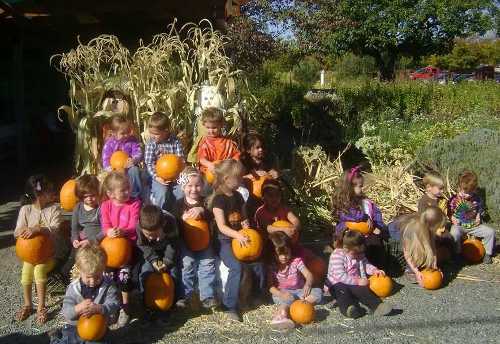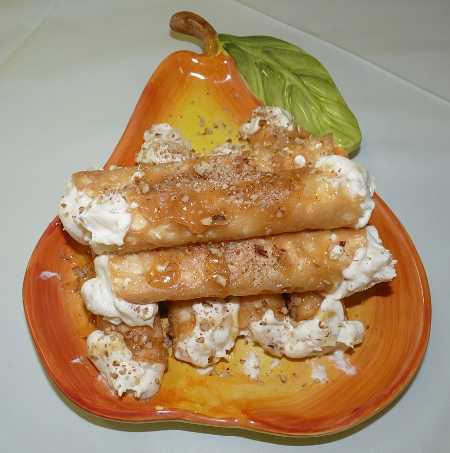
LAKE COUNTY, Calif. – While some parts of the Lake County economy are still recovering from the Great Recession, the agricultural sector is doing very well and setting records for production.
That's the finding not just from the 2012 crop report but from projections offered for this year by local producers and officials.
Agricultural Commissioner Steve Hajik said 2012 proved to be a record year for Lake County's agriculture production, with total value coming in at $84.8 million, up 27 percent from the $66.8 million total in 2011, and breaking the previous record set of $72.6 million in 2008.
It was a good year all around for Lake County's top crops – winegrapes, pears, walnuts and cattle, he said.
Thanks to increased prices and production, Lake County's 2012 winegrape crop was valued at $47.8 million, up $7.8 million from the previous year and the highest value in a decade, according to the report.
Hajik's report said there were 8,392 winegrape acres last year, up by 54 acres from 2011. Production was up 3 percent, or 812 tons, and there was a 15-percent per ton price increase.
The top red varietal was Cabernet Sauvignon, with 11,992 tons at $19.4 million, with Sauvignon Blanc – with 8,592 tons valued at $8.6 million – the top white varietal. Zinfandel, Petite Sirah, Chardonnay, Merlot and Syrah also were among the top producing varietals, the report showed.
Pears, long a top Lake County crop, came in at No. 2 in 2012, with a value of $24.1 million from 2,130 producing acres, up $5.1 million from the previous year.
While pear acreage had dropped 28 acres from 2011, with production down by 7,388 tons – or 17 percent – prices went up 50 percent, which Hajik called “a big, big jump.”
Winegrapes and pears had a great year, however the No. 3 crop, walnuts, may have had the best year of all in 2012.
“Walnuts had a banner year” in 2012, said Hajik.
Last year's crop was valued at $6.5 million, increasing 110 percent over the 2011 crop, which was valued at $3.1 million. Production in 2012 was up 54 percent, rising to 2,042 acres from 1,242 acres in 2011.
“It was huge,” Hajik said of the increase.
“Walnuts have consistently grown in acres the last three years,” he added, explaining that walnuts are the new health food. The crop also has low production costs and is hardy, with few Lake County pests that bother walnuts.
“We don't get the production that the valley gets, but we have quality here,” he said.
Walnuts also account for much of the county's organic acreage; Hajik said about 40 percent of the walnut crop is organic.
Cattle, the No. 4 commodity, came in at $2.1 million, up $431,455, or 22 percent, from the $1.8 million value registered in 2011. Hajik attributed the increase to a reduced supply of cattle and increased demand for them.
Despite the recession, over the last several years Lake County's agricultural commodities have retained value, he said.
Hajik said the recession didn't really have an impact on food and agricultural crops, pointing out that no matter how tough the economy is, people have to eat.

Strong projections ahead
Hajik is optimistic about what's ahead for the county's top crops.
He said winegrape value is continuing to increase, with growers now getting contracts, which hadn’t been available before.
He said the increase in wine consumption has helped end the wine glut of a few years ago, which had actually caused a slight decrease in local acreage. Now, the wine industry is having trouble getting enough grapes to meet demand.
“I expect new winegrape acreage to come up this year and next year,” he said, adding that the newly planted winegrapes won't be producing for three more years.
Lake County Winegrape Commission President Debra Sommerfield said what the 15-percent value increase for Lake County winegrapes reflects “is both an overall industrywide increase in demand for winegrapes combined with the increasing recognition Lake County winegrapes receive for quality.”
Sommerfield said Lake County winegrowers have been working diligently for years to deliver quality fruit, and have done the “heavy lifting,” including researching the county's soils, climate and elevation to find the right varietals for the right locations.
At the same time, she said they've increased the professionalism of their vineyard crews by training them on best practices and sustainable farming techniques.
“The quality speaks for itself and winegrape buyers and winemakers are taking note,” she said.
Sommerfield said the commission held a technical seminar for grape growers in June that included longtime Lake County winemakers as well as winemakers from prestigious North Coast wineries who have recently begun using Lake County grapes in their wine programs.
She said the group discussed the importance of quality and consistency of fruit in winemaking – qualities they're seeing in Lake County's grapes.
“It’s exciting to note that many of those winemakers were young winemakers – basically under 40 – so to have them speak so enthusiastically about our region bodes well for the long-term growth of the wine industry in Lake County,” Sommerfield said.
Sommerfield said the commission office has fielded an increasing number of inquiries for winegrapes over the past several months, and they continue to hear from several prestigious North Coast winemakers about their positive impressions of the quality of Lake County winegrapes.
As for the strong increases in pears, Hajik attributes it to good quality and size.
He said the remaining pear acreage in Lake County is located on prime agricultural lands, so the best lands are growing pears and marginal land is out of production. The pears that are being produced are primarily going onto the fresh market.
“This is a good year for pears,” he said, noting that he's not sure it will turn out to be quite as good as 2012.
While he doesn't anticipate pear acreage going up, he thinks it will remain stable. However, he cautioned, “It could all change in a heartbeat.”
Toni Scully, president of Scully Packing, said not only was 2012 a good year, but so was 2011.
She said the pear market has stabilized, with all of the tonnage having a home. “Supply has come more in line with demand.”
Pear growers who were able to hang on through a number of hard years are now seeing better times, she said.
Pear packing for this year's crop finished at the end of August. While it's too early to say how the year's crop will do on the market, the crop was strong, said Scully.
“The fruit was good, and it was big,” she said.
On the size scale, the Lake County crop peaked on pears in the 70s, which she said is “kind of unheard of,” as it's the biggest size, and Scully said bigger fruit gets a higher price.
Scully termed it a “normal” crop year, with 37,000 tons harvested.
She emphasized Lake County's continued stability and strength in the pear market.
Lake County, she said, still produces 20 percent of all the pears grown in California, and is the source of 30 percent of all the pears shipped fresh in the state.
“So we're still a big player,” she said.
Email Elizabeth Larson at This email address is being protected from spambots. You need JavaScript enabled to view it. . Follow her on Twitter, @ERLarson, or Lake County News, @LakeCoNews.






 How to resolve AdBlock issue?
How to resolve AdBlock issue? 



